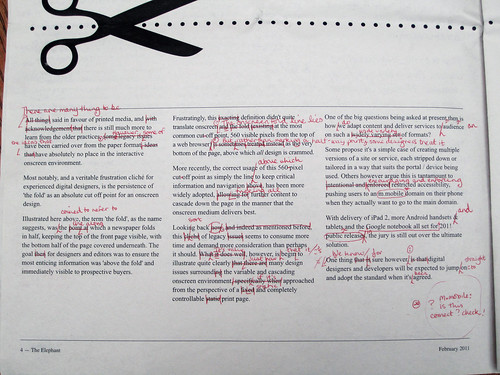Whenever hearings are completed a committee may meet to mark up a measure. The language of the original measure will be analyzed line by line or section by section and then marked up or changed and amended.

The easiest way to conduct a markup is to use an introduced measure. In this process, the chair notifies committee members that the vehicle for the markup will be an introduced bill and then identifies the bill number and, in many cases, the original sponsor of the bill. At a House markup, the measure will typically be read for amendment by section. The measure can be open for amendment at any point by unanimous consent. At a Senate markup, measures are typically open to amendment at any point. Each section can be amended by two degrees.
Many measures that are considered by a full committee will have already received subcommittee action. If a subcommittee reports its version of a text to the full committee, the product will usually be printed and referred to as a committee print. The committee print can then be used as a markup vehicle. Another option would be for a committee or subcommittee chair to offer the subcommittee reported version. In this case, it is offered as an amendment in the nature of a substitute for the measure that was initially used as the markup vehicle. There is also a third approach that can be used and it involves the subcommittee chair introducing a new measure that reflects the subcommittee changes to the earlier measure. In this case, the new measure may then be referred to the committee and can be used as a markup vehicle.
The option of a staff draft or chairman’s mark makes it possible for the committee to use it as a vehicle for a text that will incorporate changes that are made both in subcommittee markup and additional changes that are negotiated afterward. The product of such negotiations is then incorporated into a committee print.
In some instances, a chair may prefer to offer an amendment in the nature of a substitute to the measure that is selected as the markup vehicle. This type of amendment represents a full-text alternative. It can only be offered at the beginning of the amendment process after the first section of the measure has been read.
Reference: 6.50 Committee Markup, Congressional Deskbook.
Also see the Congressional Glossary.
For more than 40 years, TheCapitol.Net and its predecessor, Congressional Quarterly Executive Conferences, have been teaching professionals from government, military, business, and NGOs about the dynamics and operations of the legislative and executive branches and how to work with them.
Our custom on-site and online training, publications, and audio courses include congressional operations, legislative and budget process, communication and advocacy, media and public relations, testifying before Congress, research skills, legislative drafting, critical thinking and writing, and more.
TheCapitol.Net is on the GSA Schedule, MAS, for custom on-site and online training. GSA Contract GS02F0192X
TheCapitol.Net is now owned by the Sunwater Institute.
Teaching how Washington and Congress work ™

